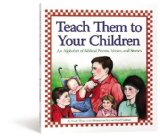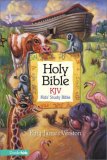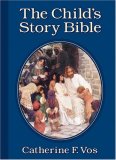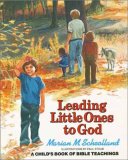
|
INTRO-HOME PAGE
ARTICLES-REVIEWS
HOMESCHOOL INFO
GRADE LEVELS
LINK LIBRARY
MORE LINKS
LEARNING FOR LIFE
PRODUCT CATALOG
ABOUT US

 |

Preschool | K | 1 | 2 | 3 | 4 | 5 | 6 | 7 | 8 | 9 | 10 | 11 | 12 | College
(Primary, Ages 5 to 7)
Bible Study
Mathematics
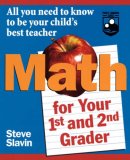 Math for Your 1st and 2nd Grader, by Steve Slavin. This book covers all of the math concepts that your first- and second-grader should be learning. Steve Slavin, an educator with a special gift for math instruction, shows parents how to teach the fundamentals of counting, addition, subtraction, fractions, money, telling time, simple word problems, the difference between ordinal and cardinal numbers, even the beginnings of multiplication and division. These skills are built upon step-by-step, in fun but informative lessons that are just the right length for young children. The author writes in a clear and straightforward manner, providing easy-to-understand explanations seldom found in other books. He also gives plenty of practical examples in how to teach and verify that your child understands the material. First- and second- grade final exams are included. This book wasnít actually written for the homeschool market, but every homeschool family should have this book! Itís a great bargain for such a solid foundation in math! If you have your child write the answers in a notebook, you can re-use this book with more than one child. Itís also a great preparation for Saxon Math. We have used this book with all three of our boys, and by the time they finished they were easily ready for Saxon 3 and even skipped ahead to Saxon 5/4.
Science
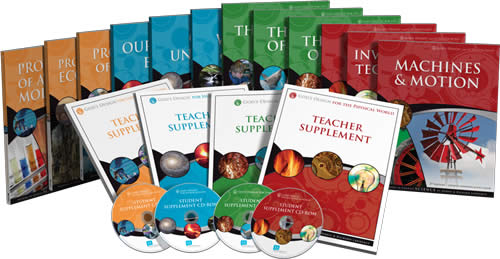 Godís Design for Science, by Richard and Debbie Lawrence. This is a complete science curriculum for grades 1-8 all in one set! It covers life science, earth science, physical science, chemistry and ecology. Learn how real science supports biblical authority and the Genesis account of creation. The curriculum was designed specifically with homeschoolers in mind so the lessons are short, easy to teach, and take a hands-on approach using ordinary household items for experiments and activities. The recommended sequence is... Grade 1: Life Science; Grade 2: Earth Science; Grade 3: Chemistry; and Grade 4: Physical Science followed by Grade 5: Life Science; Grade 6: Earth Science; Grade 7: Chemistry; and Grade 8: Physical Science. Each subject has a "Beginners" section geared to elementary-age students, and when you start the series over again with middle school students you will use the more in-depth "Challenge" section. This way, each subject is taught twice to reinforce previous learning and develop deeper understanding of the concepts. (This also lets you teach younger and older children at the same time.) The curriculum comes with 16 softcovers (including both student & teacher books) and 4 CD-ROMs. All of the worksheets and tests may be photocopied for use with more than one student.
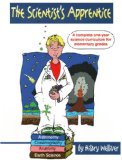 The Scientist's Apprentice, by Hilary Welliver. This complete one-year science curriculum allows you to teach all your kids in grades K through 6 together! Students learn about astronomy, anatomy, earth science, and oceanography through experiments, activities, songs, art and more. Includes detailed teacher information, lesson plans, bibliographies, and reproducible activity sheets. More interesting than a text and easier than creating your own study. SEE ALSO: Elementary School Science Simulations - Colorful, Fun, and Interactive!
Social Studies
Phonics (choose one) 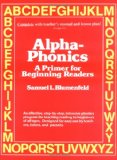 Alpha-Phonics: A Primer For Beginning Readers, by Samuel L. Blumenfeld. Can you teach your children to read in just 10 minutes a day? Yes, with this acclaimed phonics program! Progressive lessons present each letter of the alphabet by its sound and then blend letter sounds to form basic words. More advanced exercises introduce whole sentences. Includes teacher's manual and lesson plans, for grades K - 4. 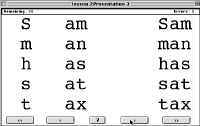 Phonics Tutor CD-ROM . Phonics Tutor is a complete phonics, reading, and spelling curriculum based on Sam Blumenfeld's Alpha-Phonics book. It contains enough lessons to last from kindergarten to third grade.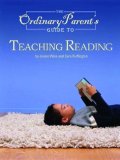 The Ordinary Parent's Guide to Teaching Reading, by Jesse Wise and Sara Buffington. A simple, scripted book manual that guides parents and children through each lesson, from beginning vowel sounds through words on a fourth-grade level.  Teach Your Child to Read in 100 Easy Lessons, by Siegfried Engelmann. A complete, step-by-step program that shows parents simply and clearly how to teach their children to read using the DISTAR method. By investing 20 minutes a day, you'll have your preschoolers and non-reading elementary school children reading at a second grade level in 100 days. (We have not actually used this one, but know a lot of people who swear by it so that's why we included it here.) Sing Your Way Through Phonics - Tired of teaching phonics through boring worksheets and repetitive drills? Action Factor's Sing Your Way Through Phonicsģ CDs, Mini-Charts, and Read-and-Sing books help kids build reading foundations by capitalizing on their natural playfulness, energy, and creativity.
Language Arts
Literature
 The Great Big Treasury of Beatrix Potter by Beatrix Potter 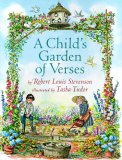 Child's Garden of Verses by Robert Louis Stevenson
Miscellaneous

Preschool | K | 1 | 2 | 3 | 4 | 5 | 6 | 7 | 8 | 9 | 10 | 11 | 12 | College

ARIZONA | LEARNING FOR LIFE | PRODUCT CATALOG | LINK LIBRARY | ABOUT US | CONTACT
These pages are a continuous work in progress.
|
|


